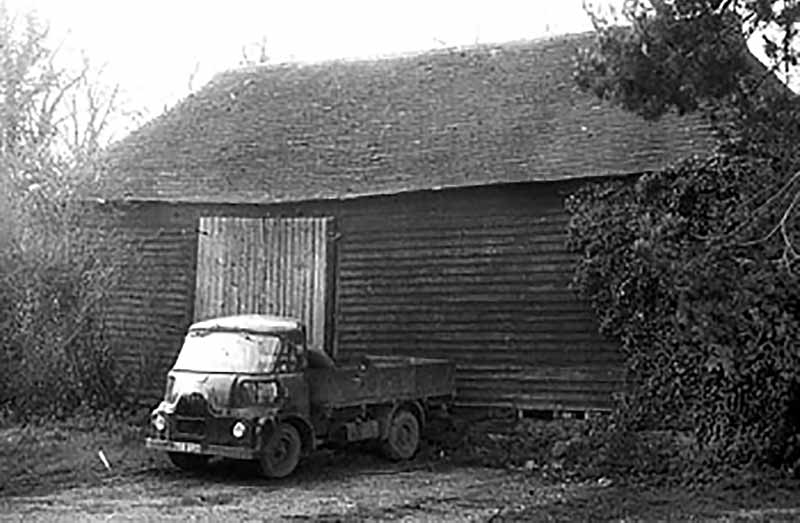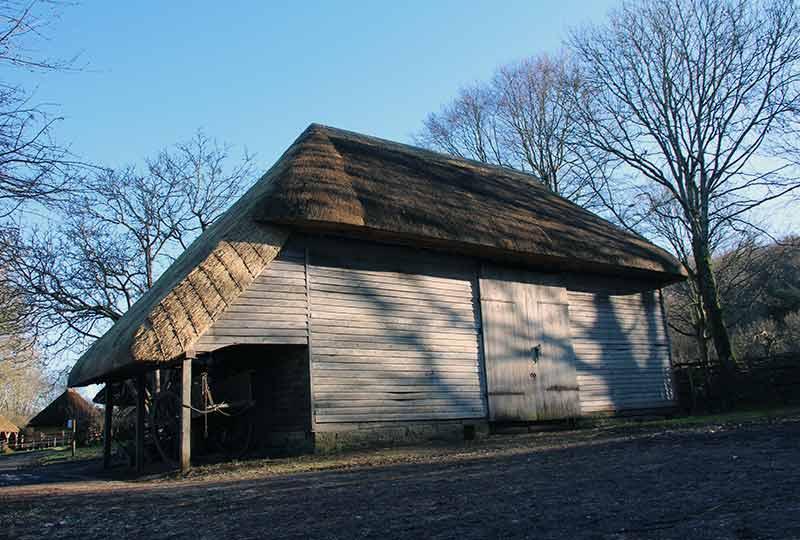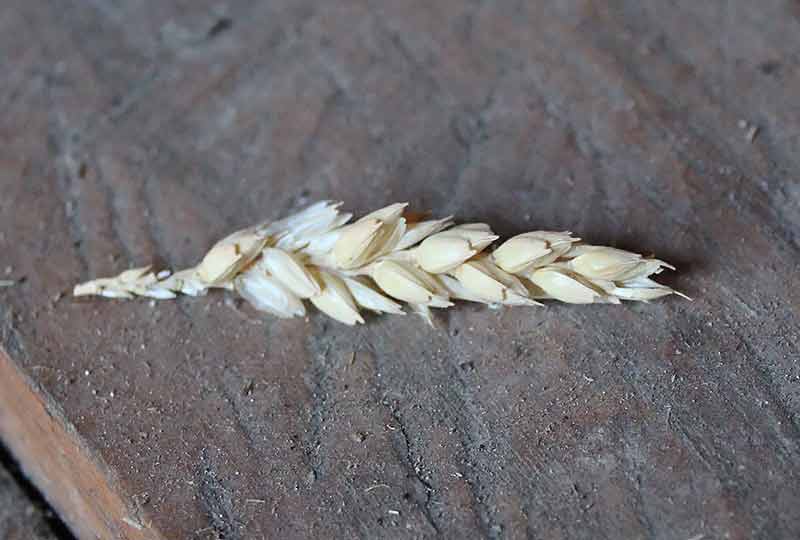
This timber-framed barn dates from about 1536. Its main purpose was storage and threshing of arable crops, such as wheat, oats, rye and barley.
The barn from Cowfold has been linked with Bayleaf Farmhouse to form a typical late-medieval Wealden farmstead, with a yard for cattle on one side and a stack yard on the other.
Share
Overview
Dates From
c.1536
Dismantled
1980
Reconstructed
1988
Original Location
Cowfold, Sussex
History
Background Information
This barn is a typical late-medieval example from the Weald. The roof is of crown-post construction and the walls are weather-boarded. The timbers have been analysed by dendrochronology (tree-ring dating) which revealed that they were felled in 1536, so the barn was probably built soon after this.

The barn on its original site before dismantling. It had been extended by one bay at the right hand end in the late nineteenth century.
In two places the date 1891 has been scratched onto the timbers, and at that date the barn was given a major overhaul including the insertion of a new tie beam. In the reconstruction it has been restored to its original form.

Very few farm buildings other than barns survive from the medieval period. Most granaries, cattle sheds, stables and cartsheds date from the 17th century and later. One of the reasons for this may be that while barns were soundly built by professional carpenters, many other buildings would have been constructed more cheaply, perhaps by the farmers themselves. Eventually, when increasing prosperity allowed, they were replaced by more permanent structures.

Mortices in the posts of the Cowfold barn indicated that originally it had lean-to structures on one side and one end. We have reconstructed them as open-sided shelters to protect animals, implements and the cart, but it also possible that they had boarded walls to form enclosed stabling for livestock.
Top 3 Interesting Facts

Carpenter-built Barn
Barns from the medieval period tend to exist more than other farm buildings, as valuable structures built by carpenters.

Animal Shelter
Mortices in posts along one side and one end indicate lean-to structures, possibly open-sided for animal shelter or implement storage.

Bayleaf Farmstead
Dated to 1536, this barn forms an important part of Bayleaf farmstead complex at the Museum.







